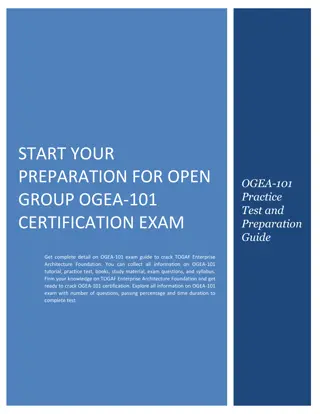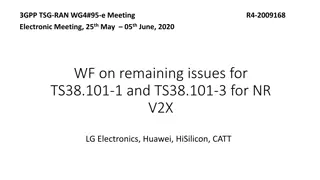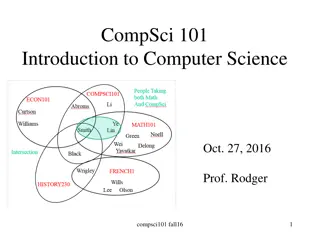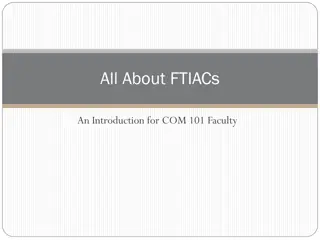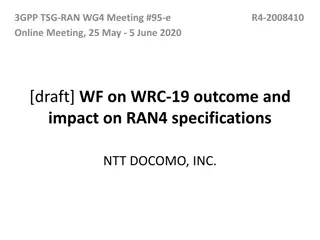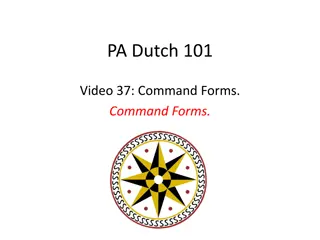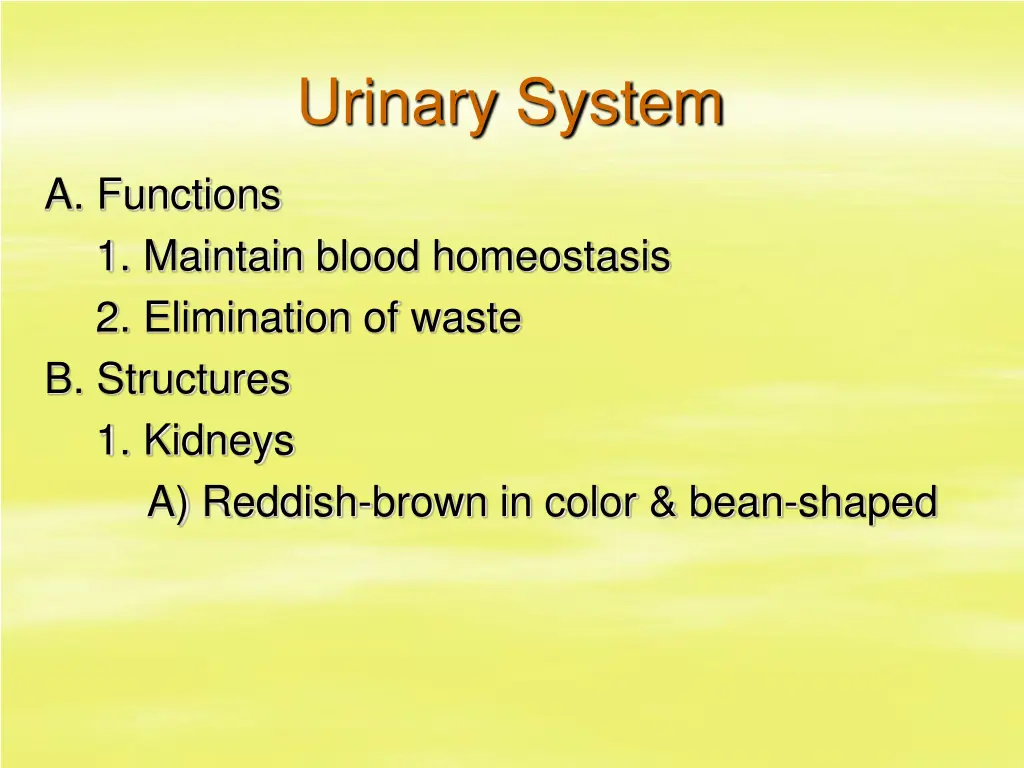
Understanding the Urinary System: Functions and Structures
Explore the functions and structures of the urinary system, including the kidneys, renal pyramids, calyces, and nephrons. Learn how this system helps maintain blood homeostasis and eliminates waste from the body.
Download Presentation

Please find below an Image/Link to download the presentation.
The content on the website is provided AS IS for your information and personal use only. It may not be sold, licensed, or shared on other websites without obtaining consent from the author. If you encounter any issues during the download, it is possible that the publisher has removed the file from their server.
You are allowed to download the files provided on this website for personal or commercial use, subject to the condition that they are used lawfully. All files are the property of their respective owners.
The content on the website is provided AS IS for your information and personal use only. It may not be sold, licensed, or shared on other websites without obtaining consent from the author.
E N D
Presentation Transcript
Urinary System A. Functions 1. Maintain blood homeostasis 2. Elimination of waste B. Structures 1. Kidneys A) Reddish-brown in color & bean-shaped
Urinary System B) Lie in superior lumbar region of the posterior abdominal wall (T12to L3) C) External Anatomy 1) Renal hilus indentation located on the medial aspect of the kidney 2) Renal capsule connective tissue covering surrounding each kidney; several layers thick
Urinary System D) Internal Anatomy 1) Renal cortex outer region of the internal kidney; lies beneath the capsule 2) Renal medulla inner region of the internal kidney; lies deep to the cortex
Urinary System a) Renal pyramids cone-shaped masses in the medulla; contain bundles of the urine-collecting tubules resulting in a striated appearance; base of each pyramid faces the cortex; 5-11 per kidney i) Papilla of the pyramid the point of each pyramid
Urinary System b) Renal columns inward extensions of the renal cortex that separate the pyramids 3) Minor calyces (calyx) cup-shaped tubes that enclose the papilla of each pyramid and collect urine from the tubules; 5-11 per kidney 4) Major calyces (calyx) branching extensions of the renal pelvis; minor calyces pass urine into them; 2-3 per kidney
Urinary System 5) Renal pelvis flat, funnel-shaped tube on superior aspect of ureter; major calyces pass urine into pelvis; 1 per kidney
Urinary System E) Microscopic Anatomy 1) Nephron functional unit of the kidney; over 1 million/kidney; produces urine through the processes of filtration, reabsorption, & secretion a) Glomerulus web of capillaries where filtration occurs; filtrate is the result
Urinary System i) Afferent arteriole takes blood to the glomerulus ii) Efferent arteriole takes blood from the glomerulus b) Peritubular capillaries surround the tubular portion of the nephron c) Bowman s capsule cup-shaped, hollow covering that surrounds glomerulus; collects filtrate from the glomerulus
Urinary System i) Podocytes cells in the Bowman s capsule that wrap around the glomerulus. d) Proximal convoluted tubule (PCT) tubular structure leading from the Bowman s capsule; site of most reabsorption e) Loop of Henle narrow hairpin loop that connects PCT & DCT i) Has 2 portions
Urinary System (a) Descending portion continuous with PCT (b) Ascending portion continuous with DCT f) Distal convoluted tubule (DCT) tubular structure that empties into collecting duct
Urinary System g) Collecting ducts (tubules) receive urine from the DCT i) Receives input from many nephrons (DCTs) ii) Extends deep into the renal medulla (pyramids) h) Papillary ducts created by the junction of adjacent collecting ducts (tubules) i) Empty into minor calyces
Urinary System i) Juxtaglomerular apparatus (JGA) i) Juxtaglomerular (JG) cells (a) Monitor BP in the afferent arteriole (b) Secrete renin ii) Macula densa cells (a) Monitor the Na+content of the filtrate in the DCT
Urinary System 2) Related terms a) Vascular nephron refers collectively to the afferent arteriole, glomerulus, efferent arteriole, and peritubular capillaries b) Tubular nephron refers collectively to the Bowman s capsule, PCT, loop of Henle, DCT, and collecting ducts c) Renal corpuscle refers collectively to the glomerulus & Bowman s capsule
Urinary System 2. Ureters A) Slender tubes that transport urine from the kidneys (renal pelvis) to the urinary bladder B) Transport urine via peristaltic action and gravity
Urinary System 3. Urinary bladder A) Collapsible, muscular sac that stores and expels urine; lined with transitional epithelium 1) In males it lies superior to the prostate gland 2) In females it lies inferior and slightly anterior to the uterus
Urinary System B) Detrusor muscle smooth muscle surrounding the bladder squeezes urine from the bladder C) Holds max of 800-1000ml D) Trigone smooth, triangular portion outlined by the openings of the ureters & urethra 1) Common site of infections 4. Urethra A) Thin-walled tube that carries urine from the bladder to the outside of the body
Urinary System 1) Internal urethral sphincter a) Smooth muscle sphincter b) Located at the junction of the bladder and the urethra 2) External urethral sphincter a) Skeletal muscle sphincter b) Surrounds the urethra at the urogenital diaphragm
Urinary System B) Females 1) External urethral orifice opening of the urethra; located between the vagina and the clitoris C) Males multiple segments 1) Prostatic urethra portion running within the prostate gland
Urinary System 2) Membranous urethra portion running through the urogenital diaphragm 3) Spongy urethra portion running through the penis (corpus spongiosum) 4) External urethral orifice opening of the urethra at the end of the penis 5) The male urethra is also the passageway for reproductive secretions
Urinary System C. Filtering of Blood 1. Blood Pathway A) Renal artery segmental artery lobar artery interlobar artery arcuate artery cortical radiate artery afferent arteriole glomerulus efferent arteriole peritubular capillaries cortical radiate vein arcuate vein interlobar vein lobar vein renal vein
Urinary System 2. Filtration movement of fluid/substances from the glomerulus into the Bowman s capsule A) Glomerulus 1) Site of filtration 2) Composed of fenestrated capillaries 3) NFP = GBHP - (CHP+GBOP)
Urinary System B) Bowman s capsule 1) Filtration slits gaps between the podocytes that allow fluid to pass through 2) Fluid is referred to as (glomerular) filtrate 3) Glomerular filtration rate (GFR) = volume/time (~180L/day or ~48 gal/day)
Urinary System 3. Reabsorption movement of fluid/substances from the kidney tubules into the peritubular capillaries A) Proximal convoluted tubule site of the greatest amount of reabsorption 1) Na+ occurs via both primary active transport & facilitated diffusion a) The active transport of Na+sets up the conditions that allow almost all other types of reabsorption in the PCT
Urinary System 2) Glucose, amino acids, & vitamins secondary active transport (cotransport) with Na+ 3) Cations (Ca++, K+, Mg++) via paracellular movement 4) Anions (Cl-, HCO3-) Cl-via paracellular transport and HCO3-via cotransport with Na+ 5) Water via osmosis 6) Urea & lipid-soluble substances via simple diffusion
Urinary System B) Loop of Henle 1) Descending portion a) Water via osmosis 2) Ascending portion a) Na+, K+ & Cl-via Na+ K+ 2Cl- cotransportor and paracellular movement b) Ca++and Mg++via paracellular movement c) *NO water*
Urinary System C) Distal convoluted tubule 1) Na+via primary active transport in the presence of aldosterone 2) Ca++via primary active transport in the presence of parathyroid hormone 3) Cl-via simple diffusion & secondary active transport (cotransport w/ Na+) 4) Water via osmosis in the presence of antidiuretic hormone (ADH)
Urinary System D) Collecting ducts 1) Na+via primary active transport in the presence of aldosterone 2) H+, K+, HCO3-, & Cl-via passive processes dependent on the movement of Na+ 3) Water via osmosis in the presence of antidiuretic hormone (ADH)
Urinary System 4. Secretion movement of fluid/substances from the peritubular capillaries into the kidney tubules A) Occurs in all portions of tubule system B) Important for: 1) Eliminating substances that weren t filtered (ex. penicillin & aspirin) 2) Eliminating undesirable substances that were passively reabsorbed (ex. urea) 3) Eliminating excess K+ 4) Maintaining blood pH (via H+& HCO3-)
Urinary System 5. Urine A) Urine Composition 1) 90% water 2) Nitrogenous wastes (urea) 3) Salts 4) Toxins 5) Pigments (from the breakdown of hemoglobin and bile pigments) 6) Hormones
Urinary System 7) If blood, protein, or glucose are detected this is usually an indication of kidney troubles 8) Pus, mucus, or cloudiness can indicate an infection somewhere in the urinary tract B) Urine characteristics 1) Color clear to deep yellow in color 2) Odor slightly aromatic when fresh but tends to develop an ammonia odor due to bacterial metabolism
Urinary System 3) pH urine is slightly acidic (about pH 6) 4) Specific gravity 1.005 to 1.035 5) Volume 1000-2000ml per day
Urinary System 6. Pathway of Urine from the Bowman s capsule A) Bowman s capsule proximal convoluted tubule descending loop of Henle ascending loop of Henle distal convoluted tubule collecting ducts papillary ducts minor calyces major calyces renal pelvis ureters urinary bladder urethra outside the body
Urinary System 7. Urination (Micturition) A) Visceral reflex 1) When bladder fills to 200-400ml, stretch receptors in wall fire 2) Impulses travel to micturition center in sacral region of spinal cord 3) Impulses travel back to detrusor muscle and internal urethral sphincter, as well as to the cerebral cortex
Urinary System a) The detrusor contracts & the internal urethral sphincter relaxes allowing urine to travel down the urethra until it reaches the external urethral sphincter b) The cortex gives us a conscious awareness of the need to urinate i) Initially we can choose to ignore this and the urge will subside temporarily
Urinary System 4) Under conscious control cerebral cortex fires causing external urethral sphincter to relax a) Pressure created by the detrusor muscle and other muscles in the urogenital region force urine from the body
Urinary System 8. Glomerular Filtration Rate (GFR) A) Total glomerular filtrate of both kidneys/time B) Directly proportional to urine production C) Directly proportional to the NFP D) Regulation of GFR 1) Autoregulation a) Myogenic mechanism i) Triggered by smooth muscle in afferent arteriole
Urinary System (a) In response to increased systemic BP (stretch) (i) Causes vasoconstriction of the afferent arteriole to reduce pressure and protect the glomerulus (b) In response to decreased systemic BP (stretch) (i) Causes vasodilation of the afferent arteriole to increase pressure and maintain a minimal GFR
Urinary System b) Tubuloglomerular feedback mechanism i) Triggered by the macula densa cells (a) In response to increased flow rate and/or osmolarity of the filtrate (i) Causes vasoconstriction of afferent arteriole to decrease pressure and protect the glomerulus
Urinary System (b) In response to decreased flow rate and/or osmolarity of the filtrate (i) Causes vasodilation of afferent arteriole to increase pressure and maintain a minimal GFR
Urinary System 2) Hormonal Regulation a) Renin-angiotensin mechanism i) JG cells are stimulated to release renin in response to: (a) Reduced stretch in JGA (b) Input from macula densa cells (c) Sympathetic input
Urinary System ii) Renin converts angiotensinogen to angiotensin I iii) Angiotensin I is converted to angiotensin II by ACE iv) Angiotensin II causes: (a) Vasoconstriction of systemic arterioles (b) Stimulation of hypothalamic thirst center
Urinary System (c) The release of ADH & aldosterone (i) ADH promotes the reabsorption of water in the DCT & CD (ii) Aldosterone promotes the reabsorption of Na+in the DCT & CD
Urinary System b) Atrial natriuretic peptide (ANP) i) Released from cells in the ventricles ii) Inhibits release of renin, aldosterone, and ADH iii) Promotes excretion of Na+& water from the DCT & CD
Urinary System 3) Neural Regulation (ANS) a) Sympathetic nervous system i) No input ii) Moderate input iii) Large input fight-or-flight
Urinary System D. Disorders 1. Pyelitis infection of the renal pelvis and calyces 2. Pyelonephritis infection or inflammation of the entire kidney 3. Glomerulonephritis infection or inflammation of the glomerulus 4. Anuria low urinary output as a result of injury, transfusion reactions, low blood pressure, etc
Urinary System 5. Renal calculi kidney stones 6. Urethritis inflammation of the urethra 7. Cystitis inflammation of the bladder A) Urinary Tract Infection (UTI) generic term used to refer to urethritis, cystitis, or both 8. Incontinence inability to control micturition


